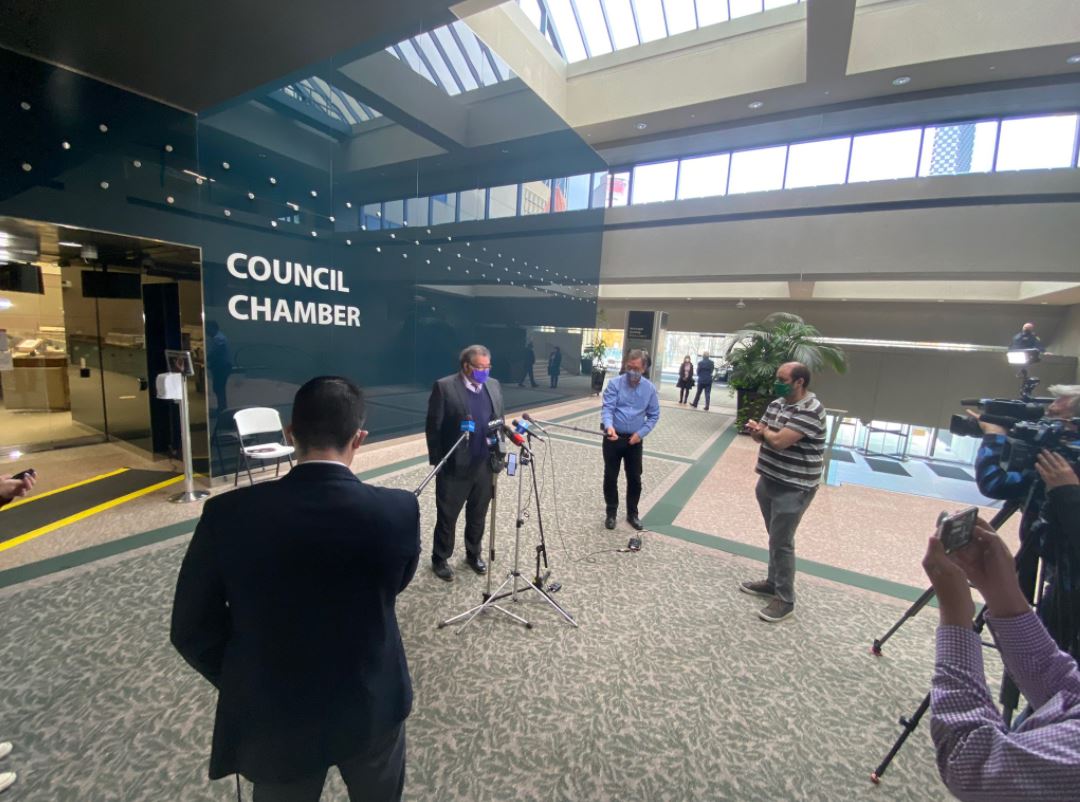The Guidebook for Great Communities will be back in front of Calgary city council on Tuesday for another day of public hearing after 125 people signed up to speak about the document.

The city has said the guidebook is meant to update and streamline some of the city’s planning policies, and offer tools to help communities develop local area plans. The move is meant to help guide redevelopment in inner-city communities as Calgary attempts to keep half of its growth within the existing city limits.
“The Guidebook for Great Communities is a compilation of our standard policies that will apply or can apply throughout various areas of the city through … the local area plan, which is the unique policies for each community,” director of community planning Debra Hamilton told council Monday.
The need to change the city’s planning process came from an outdated process that wasn’t working for Calgarians, council heard.
“Our problem was that we had a planning system that wasn’t simple or understandable or easy to work with, and it often relied on outdated policy and regulation that was developed considering what was on the ground, not what we envisioned,” senior planner Lisa Kahn said.
“The system didn’t sufficiently enable citizen and business outcomes.”
Enter the guidebook, used in conjunction with local area plans (LAP). North Hill communities are one of four areas where the city is piloting LAPs.
“We need a system that will make it easier for businesses that results in better-built form in our communities, and that truly responds to the needs of many rather than just the needs of a few,” Kahn said. “The guidebook and North Hill communities local area plan are just two pieces of that system.”
The guidebook is meant to help city communities continue their journey through time, coming in to inform the local area planning process.
“Calgary is a young city and it’s been quite the journey so far,” said Teresa Goldstein, city manager of community planning. “Calgarians have also seen tremendous change in the types of households living in our city.”

Goldstein said demographics in the city are changing, as more Calgarians age, decide not to get married or have children, or even purchase homes later.
“In 1980, households that consisted of one person living alone or two people living without children were about 30 percent. Today, it makes up about half of Calgarians.”
That’s dropped the average number of persons per home to 2.6 from four.
“Helping our communities ride these waves of population decline and growth means that the city can continue investing in our communities and most importantly, talk about our future,” Goldstein said.
The Guidebook has received considerable opposition in recent weeks from several community associations and members of council, who want to see a decision on the plan delayed.
Ward 11 Coun. Jeromy Farkas has been an outspoken opponent to the guidebook, with councillors accusing him of spreading misinformation or not being properly informed of the contents of the guidebook.
On Monday, Ward 4 Coun. Sean Chu attempted to halt the Guidebook debate until Nov. 15, less than a month after the upcoming municipal election. His motion was defeated 3-11, with only himself, Farkas and Coun. Joe Magliocca voting in support.
On Tuesday, Mayor Naheed Nenshi said delaying the decision to November was a “terrible idea” and instead wants to hear from Calgarians on the guidebook.
“It’s really helpful that we’re listening to citizens today, if it means that we have to go back to the drawing board for a little while, but I’m not really opposed to that,” Nenshi said. “But I need to have very specific direction on what that means, because I think a lot of folks are saying more public engagement as a mask.”
Several panels of speakers took part in the public hearing on Monday evening. Although the Guidebook did receive support from several speakers, who said the plan may not be perfect but addresses the need for organized redevelopment, many of the speakers called for changes and more consultation.
Concerns among the speakers included the impact of higher density development in their neighbourhoods, clarity in the plan, and community over the five-year-long process.
Supporters highlighted benefits of the guidebook, like more affordable housing for students and young adults, environmental benefits, and transparent future planning.
Terry Wong, president of the Hounsfield Heights Briar Hill Community Association, was among the first to speak.
“There is definitely a need for residential form, meaning townhouses and row housing,” Wong said. “But they’ve got to be placed in the right place, they’ve got to be placed in a way in which communities are at the table and have a voice.”
Early in the process, a seemingly disproportionate number of citizens were calling in from south Calgary communities like Elbow Park and Mount Royal, despite a citywide potential for the application of the guidebook.
“It is quite remarkable that the vast majority of the participants have been from two or three small neighbourhoods, not from the whole rest of the city,” Nenshi said. “And it’ll be interesting to hear what others have to say.”
Like his fellow councillors, Nenshi has been actively hearing out the public submissions and asking questions through the process.
“I’ve really been trying to listen very carefully to all the members of the public who have been speaking and perhaps separate the wheat from the chaff a little bit, because I think there are some very interesting ideas and what we’re hearing from some members of the public about how this could become more clear,” Nenshi said.
“The constant thing we’re hearing is, ‘I actually don’t have any problem with this guidebook. I just don’t know how it’s going to be implemented.’”




Comments